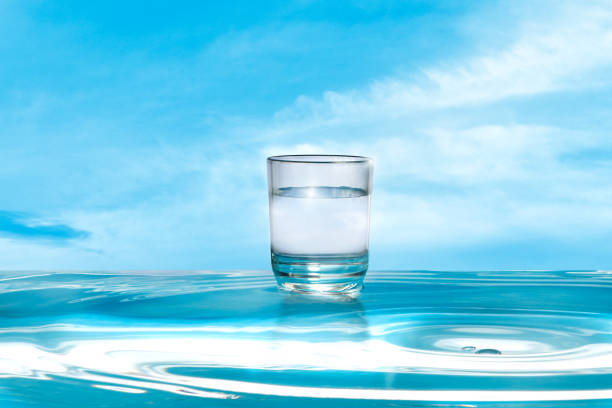1.the inlet water pressure
Reverse osmosis equipment is using reverse osmosis membrane for physical isolation. But the raw water through the reverse osmosis membrane needs a certain pressure. And ordinary water pressure is very small. But but the reverse osmosis equipment work water pressure must be greater than the osmosis membrane osmosis pressure, then you need to use a high-pressure pump for the water to add a certain amount of pressure to protect the reverse osmosis equipment for normal work. This can fill the tap water itself the lack of water pressure.

Reverse osmosis equipment to protect the efficiency of water production, but also may increase the speed of discharging wastewater. Inlet pressure will affect the reverse osmosis membrane water flux and desalination rate, water permeability with the increase in inlet pressure and increase, because the reverse osmosis membrane can not be absolute retention of dissolved salts in the water, so with the increase in pressure there is always a certain amount of through, because the membrane through the rate of water than the rate of transmission of salts, the rate of this increase in the rate of salt permeability to get a rapid restraining. Therefore, should be based on a variety of membrane performance to consider the reverse osmosis inlet pressure. The choice of inlet pressure also depends on the membrane's permeability and water recovery rate.
Pressure unit conversion
K=1000
M=1,000,000
1psi=6.895kPa
1MPa is equivalent to 10kg/cm^2.
Note: Excessive inlet pressure of reverse osmosis membrane will accelerate scale formation and shorten its life.
Recommended inlet pressure (for reference only)
Ultra-low pressure membrane: 6-8kg/cm^2
Low pressure membrane: 8-10kg/cm^2
High pressure membrane: 12-15kg/cm^2
Desalination membrane: 40-45kg/cm^2
2.PH value range
In PH7 or so, reverse osmosis membrane enjoys the highest desalination rate, with the change of PH value membrane system desalination rate also increases. the change of PH value has a big influence on the conductivity. the PH value of a wide range of reverse osmosis membrane allows us to adopt a stronger, faster and more effective chemical cleaning methods, but too high or too low PH value is likely to cause damage to the membrane.
3. The temperature of the feed water

Membrane water permeability increases with the increase in raw water temperature and decreases with the decrease in raw water temperature. Some membranes when the water temperature increased by 1 ℃, the water permeability can increase by about 2.7%. However, when the temperature is too high, it will accelerate the hydrolysis rate of the membrane. General organic membrane due to the temperature and soften, followed by the compaction of the membrane is also increased. But when the temperature is too low, it also affects the normal water production of reverse osmosis membrane. Therefore, the raw water temperature of general organic membrane should be controlled at about 20~30℃.
4.Flush membrane element

In the process of reverse osmosis, due to the water constantly through the membrane, caused by the membrane surface solution concentration rises, from the membrane surface to the feed liquid between the formation of a concentration gradient. If the concentration of the solution on the membrane surface is getting bigger and bigger, the osmotic pressure of the solution on the membrane surface is greatly increased due to this concentration polarization phenomenon, thus leading to an increase in the resistance of the water through the membrane, so the water permeability of the membrane and the desalination rate decreases, and some insoluble salts will precipitate on the surface of the membrane precipitation precipitation. In order to avoid the occurrence of concentration polarization phenomenon, equipment running to a certain time after the reverse osmosis membrane flushing, in order to prevent the increase in the concentration of the membrane surface.
5. PH value range

Since the treated water usually contains impurities such as inorganic matter, organic matter, microorganisms, granular matter and colloidal matter, it must be pretreated before the reverse osmosis process is carried out, usually by using quartz sand filters, activated carbon filters and ion exchangers. Pretreatment program depends on the raw water source of raw water composition and application conditions, well water, surface water and municipal wastewater are treated differently. Well water is more stable, with a low possibility of contamination and a simple pretreatment method, however, some of the sediment is more serious treatment is not complete will cause damage to the membrane. Surface water, on the other hand, is a water source that is directly affected by the seasons, and has the possibility of high contamination in terms of both microorganisms and colloids. Therefore, pretreatment is more complex than well water and requires other pretreatment steps including chlorine disinfection, flocculation/coagulation aid, clarification, multi-media filtration, dechlorination, and addition of acid or scale inhibitors.
6.Security filter

Security filters must be installed before the reverse osmosis membrane to prevent large particles of impurities from entering the membrane element to avoid damage to the membrane element. The filter element in the security filter is replaced once every 3-6 months.







 Do you know how to reduce the operating costs of RO reverse osmosis water treatment plants?
Do you know how to reduce the operating costs of RO reverse osmosis water treatment plants?
 Do you know what common instruments/meters are needed for reverse osmosis systems?
Do you know what common instruments/meters are needed for reverse osmosis systems?
 Does your reverse osmosis equipment often wash the membrane, change the membrane?
Does your reverse osmosis equipment often wash the membrane, change the membrane?